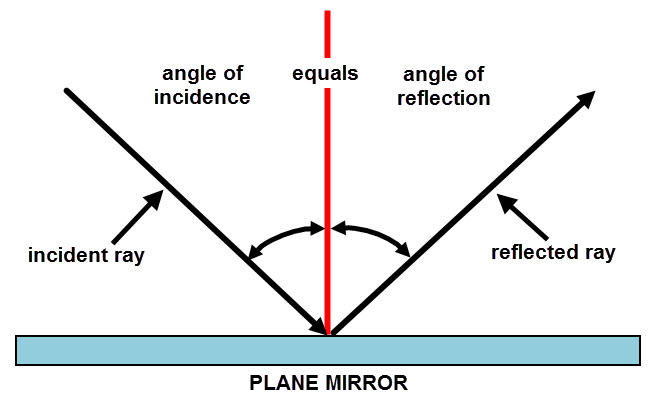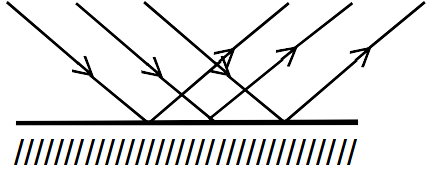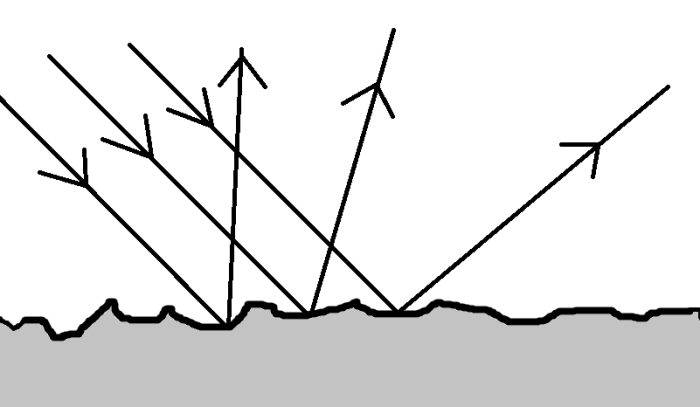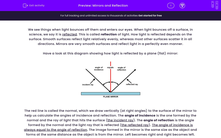The law of reflection
We see things when light bounces off them and enters our eyes. When light bounces off a surface, in science, we say it is reflected. This is called reflection of light. How light is reflected depends on the surface. Smooth surfaces reflect light relatively evenly, whereas most other surfaces scatter it in all directions. Mirrors are very smooth surfaces and reflect light in a perfectly even manner.
Have a look at this diagram showing how light is reflected by a plane (flat) mirror:

The red line is called the normal, which we draw vertically (at right angles) to the surface of the mirror to help us calculate the angles of incidence and reflection. The angle of incidence is the one formed by the normal and the ray of light that hits the surface (the incident ray).
The angle of reflection is the angle formed by the normal and the light ray that is reflected (the reflected ray). The law of reflection is that the angle of incidence is always equal to the angle of reflection. The image formed in the mirror is the same size as the object and forms at the same distance as the object is from the mirror. Left becomes right and right becomes left.
Different types of reflection


Have you ever wondered why you can see your reflection in a mirror, but not a piece of paper? The reason comes down to the fact that a mirror has a smooth, silvered surface behind the pane of glass, while a piece of paper is a rough surface. Let's look at how the light is behaving in more detail.
Shown below is a ray diagram of parallel beams of light striking a mirror:

As you can see, every angle of incidence is equal on a flat surface, and so all the reflected rays remain parallel. You will see a clear image for this reason. This type of reflection is called specular reflection.
If we now think about how light will behave when it strikes the paper, we realise that rough surfaces cannot form images because they send the rays of light in many different directions, as shown below.

The uneven surface creates different angles of incidence for each ray, meaning the parallel rays are all reflected by different angles. This means an image cannot form, and the effect is called diffuse reflection.








